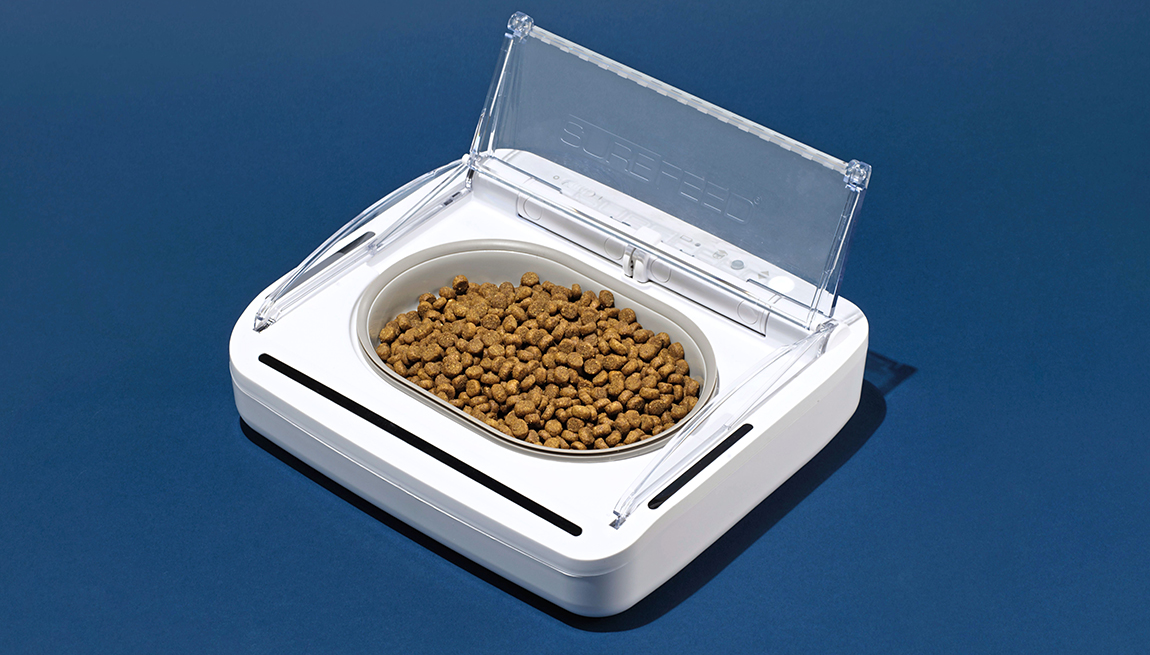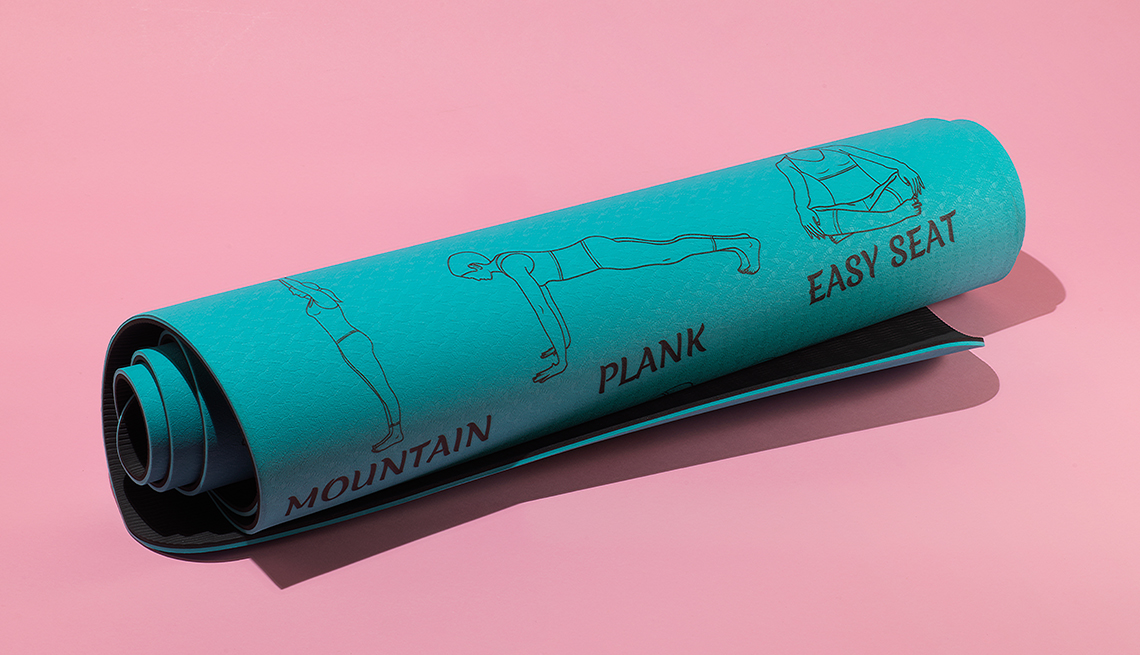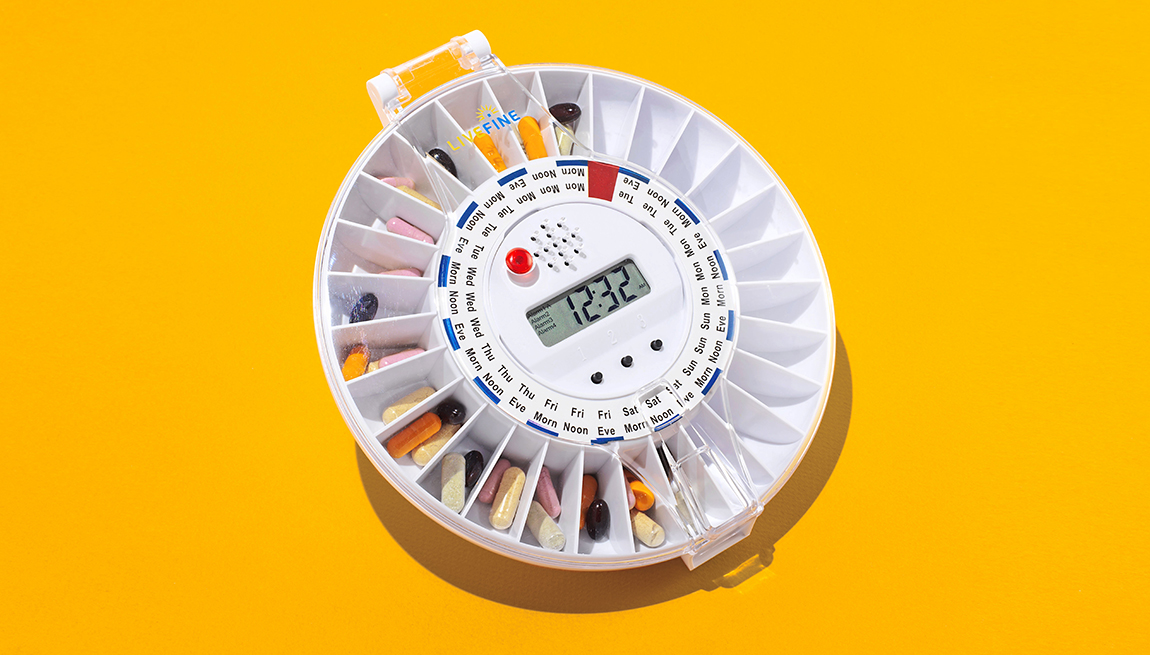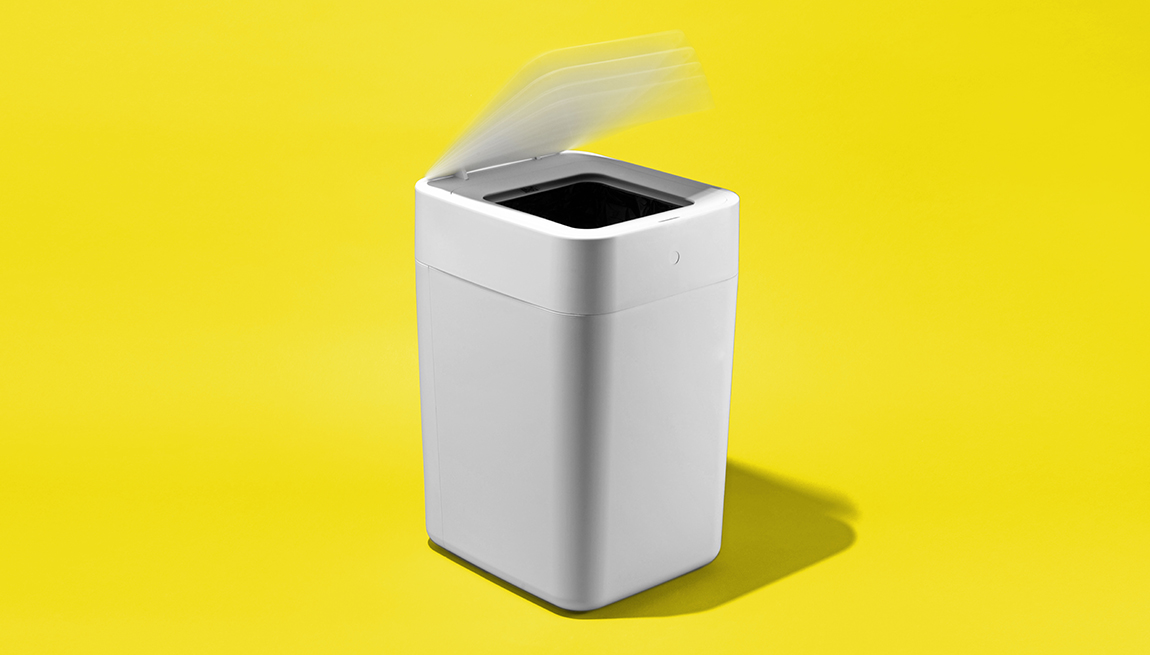Gadgets that Help Make Life Easier
A roundup of new products that can solve everyday problems
AARP, December 3, 2019
- |
- Photos
-
- 1 of
PHOTO BY: mark Serr / Automatic Labs
En español | Personal technology doesn’t matter much if it doesn’t help solve real problems you face in everyday life. And it should be easy to use: Tech should work for you, not the other way around. AARP’s contributing tech writers rounded up and tried out some of the latest gadgets that can help make life easier for people over 50.
-
- 2 of
PHOTO BY: AARP
My older car doesn’t have many modern conveniences.
Solution: Buy a new car? Or for much, much less, you can get a device that plugs into a port under the steering wheel in most cars; the system can detect potential crash situations, give you vehicle diagnostics and more. The Automatic Connected Car Assistant ($100, plus a $5 monthly premium subscription) or Vyncs ($79 for a basic subscription, plus a $30 activation fee) connects with an app on your smartphone and can remind you where you parked your car, tell you the extent of the problem behind a check-engine light, remind you when to change the oil or monitor other vehicle maintenance. —Jason R. Rich
-
- 3 of
PHOTO BY: Justin Fantl
It’s physically difficult to open and close window shades.
Solution: Most custom-window-treatment companies (such as Smith & Noble, Hunter Douglas and Ikea) now have blinds and shades that can be operated remotely using a smartphone app or smart speaker. But this requires that you replace your existing hardware. Some companies — for instance, Axis and Tilt — offer devices that, in most cases, work with existing shades or curtains. You can open or close them with a tap or set a timer. Although these devices are pricey, starting at $250 per window, they could be useful even for one bedroom window, especially with a caregiving situation. —J.R.R.
-
- 4 of
PHOTO BY: Justin Fantl
My smartphone is always running out of storage space.
Solution: Did you know you can get a flash drive for your phone? They’re like those little storage sticks for your computer, but they fit into the phone’s port (Apple and Android versions are available). SanDisk’s iXpand Flash Drive Go (starting at $60) works with an app that lets you move storage-hogging (but precious) photos and videos off your phone and onto the drive. You can also record video straight to the drive, bypassing your phone. Another option for Apple devices is the HooToo iPhone Flash Drive, starting at $23. —J.R.R.
-
- 5 of
PHOTO BY: Justin Fantl
I want to feel safe at home without buying an expensive security system.
Solution: The new Minut Point is only $149. It looks like a smoke detector, needs no wiring and mounts on a simple magnet. Instead of using a camera, it listens for noises such as broken glass and also measures swings in temperature, motion, moisture and pressure (think: fire, a broken pipe or a window pried open). It even listens for other alarms in your home; if your kitchen smoke alarm screams, your Minut in the upstairs hallway will chime, too. If you’re not home, the Minut works with your phone to alert you remotely. Going on vacation? You can share the Minut app with a friend or family member who’ll be in town so that person can respond. Another option is smart light bulbs that can act as motion-detection devices. With Philips’ Hue system with motion sensor ($110 total), you screw in the bulbs and plug a hub into a socket. Using your smartphone, you can set schedules so lights turn off and on; you can also turn on lights remotely when you’re out so you’ll feel safer returning home after dark. Using the motion detector is simple and requires no hardware or wires. Plop a palm-size cube near the front door to fire up an outdoor bulb that might ward off a prowler. —Michael Frank
-
- 6 of
PHOTO BY: Justin Fantl
I keep misplacing my glasses and other items in my house.
Solution: Attach the tiny Orbit Glasses device ($40) to your eyeglasses. It weighs only about a third of an ounce and syncs wirelessly with your smartphone. When you’re sitting down to read or headed out the door and you don’t spot your specs, just look up their location on the app. If they’re within range, the device will generate an alarm to help you find them. For other objects you tend to misplace, such as your house keys or TV remote control, check out the new Tile Sticker, which works in a similar manner yet is less expensive; a two-pack costs $20. —J.R.R.
-
- 7 of
PHOTO BY: Justin Fantl
Pet food can get smelly, spoil and attract insects.
Solution: The Sure Petcare Sealed Pet Bowl ($56) has a lid that covers the food and keeps it fresh longer, which is especially useful for wet pet food. Using motion sensors, the lid opens when your dog or cat noses up to it, then closes after the pet walks away. More advanced feeders work with your pet’s tracking microchip to verify its identity. This can be useful in households with multiple pets; the feeder will open for Tiny Tabby, but Super Shepherd is denied access. If you just feed with dry food, an alternative is the PetKit Smart Automatic Cat/Dog Feeder ($100), which holds 2.8 liters of dry food. Set it to auto-dispense portions up to 3.5 ounces any time of day and at multiple intervals (up to 10 times in 24 hours). You can feed your pet for days without needing to refill the hopper. —M.F.
-
- 8 of
PHOTO BY: Justin Fantl
I know that yoga is good exercise, but I need help making it easier.
Solution: The Backslash Fit Smart Mat has a mechanism made of two steel bands that, when tapped, spring open and shut like a giant slap bracelet. Just toss the mat on the floor and it unfurls. It can automatically roll up, too, when you press the corners. The mat grips the floor better than regular mats and has a smooth surface that helps keep it from slipping. What’s more, Backslash ($90) can be paired with Amazon’s Alexa to guide you through a series of yoga routines. A less technological — and less expensive — alternative is the Bodie Yoga Pose Mat ($34). With bold lettering and diagrams, its surface depicts 20 yoga poses. The mat’s creator was inspired by his wife’s struggles with yoga. “She’s 60 years old and still works a corporate job full-time, but wants to get fit and doesn’t always have time to go to the studio,” says Cody Keegan, of Tucson, Arizona. Both mats are 4 inches longer than a standard yoga mat, and both are latex- and PVC-free. —Risha Gotlieb
-
- 9 of
PHOTO BY: Justin Fantl
Did I already take that pill?
Solution: The TimerCap (four for $20) has a digital timer on top that automatically resets whenever you unscrew it. The beauty of this product is its simplicity. The timer counts up, so there’s never anything to set. It just indicates how much time has passed since you last took your medication. If you have a more complex medication schedule to maintain, you might find the LiveFine Automatic Pill Dispenser ($90) more useful. An alarm rings, and a bright red light goes on to indicate when it’s time to take your meds. Tip the container upside down to dispense your dose, and the alarm stops. Setup is relatively simple — it’s no more daunting than setting the alarm on your bedside alarm clock — and the device can be programmed to alert you up to six times daily. —M.F.
-
- 10 of
PHOTO BY: Justin Fantl
Changing the trash bag is a mess.
Solution: There’s a reason this is among everyone’s least favorite household chore. Garbage stinks, and trash cans are often coated with gunk. But what if your trash can did much of the work for you? Townew ($95) is a self-changing trash can. The sleek, 15-inch-tall can is designed for smaller loads; when the bag is full, press a button and the can seals the bag for you. Then it automatically opens a new bag from a refill ring. Or you can choose a lower-tech option: a trash can with a built-in bag dispenser. Several models from Simplehuman include this feature, including the rectangular step can (starting at $100). These trash cans don’t help you remove a full trash bag, but they simplify the task of replacing the bag. To open a new bag, you pull one out from the pocket attached to the can. —Tiffany Kelly

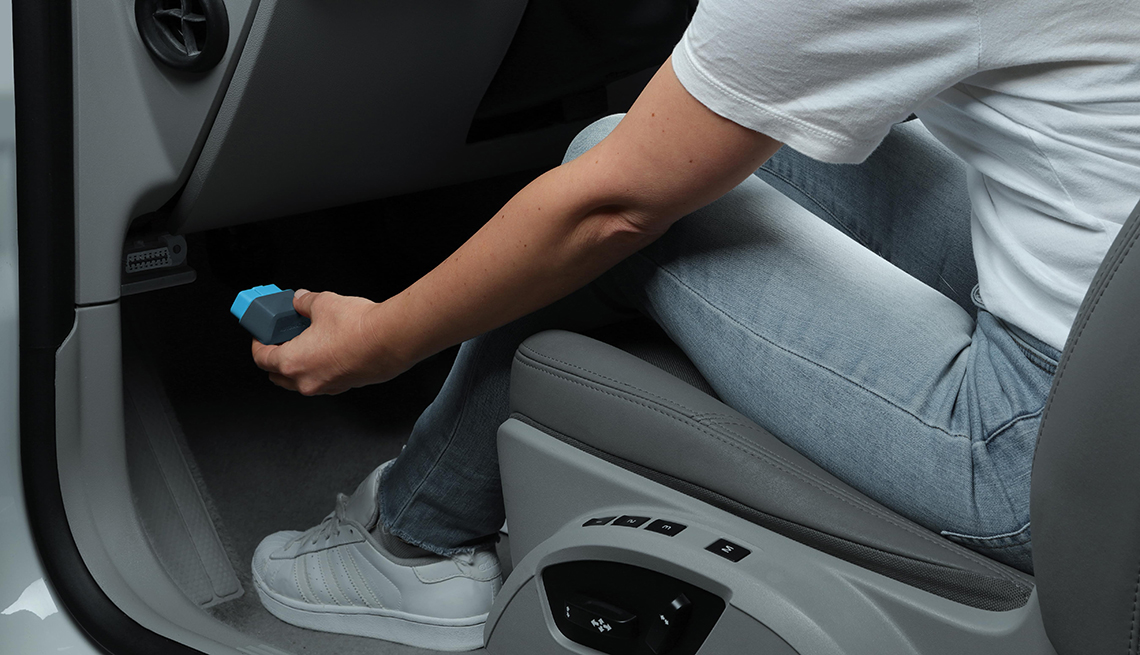
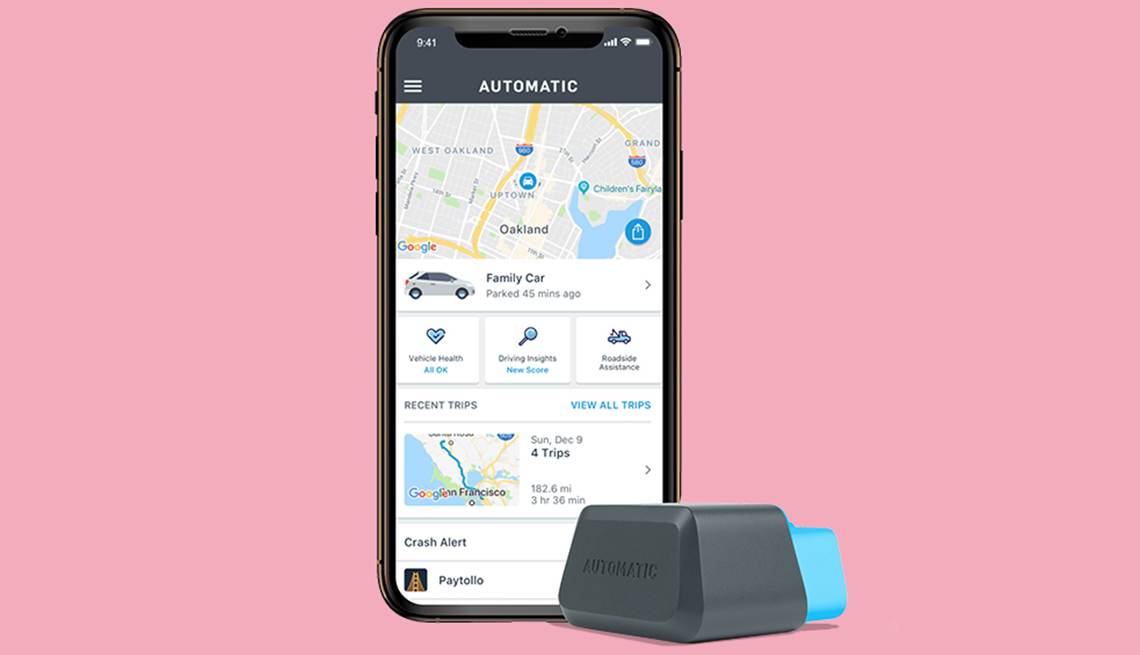
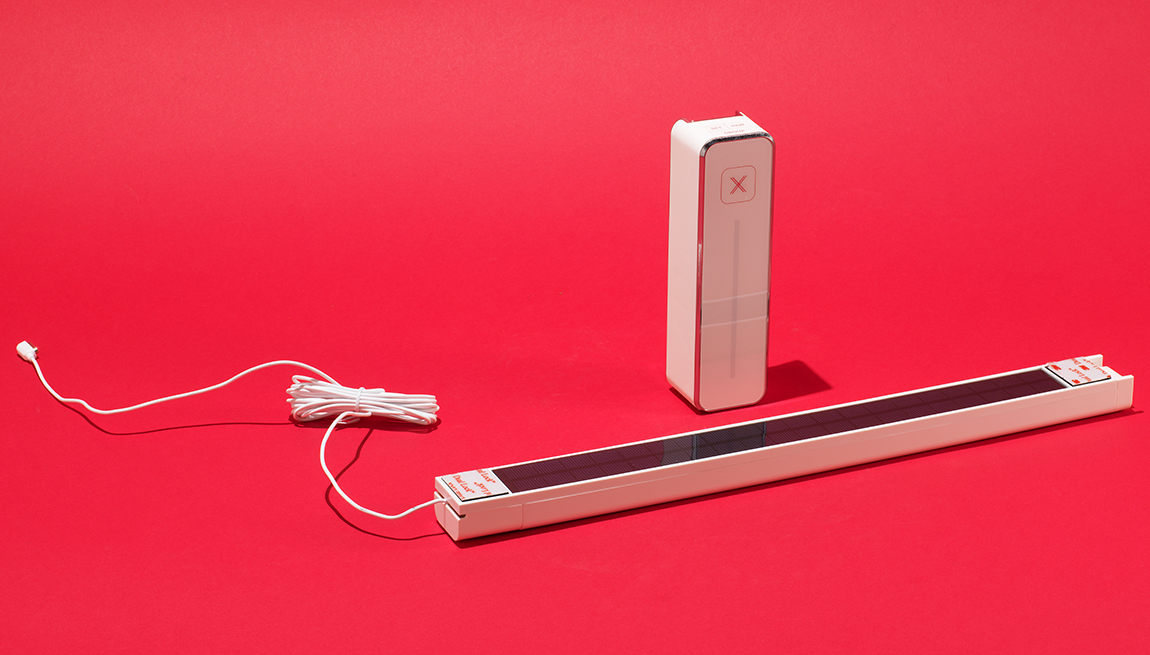
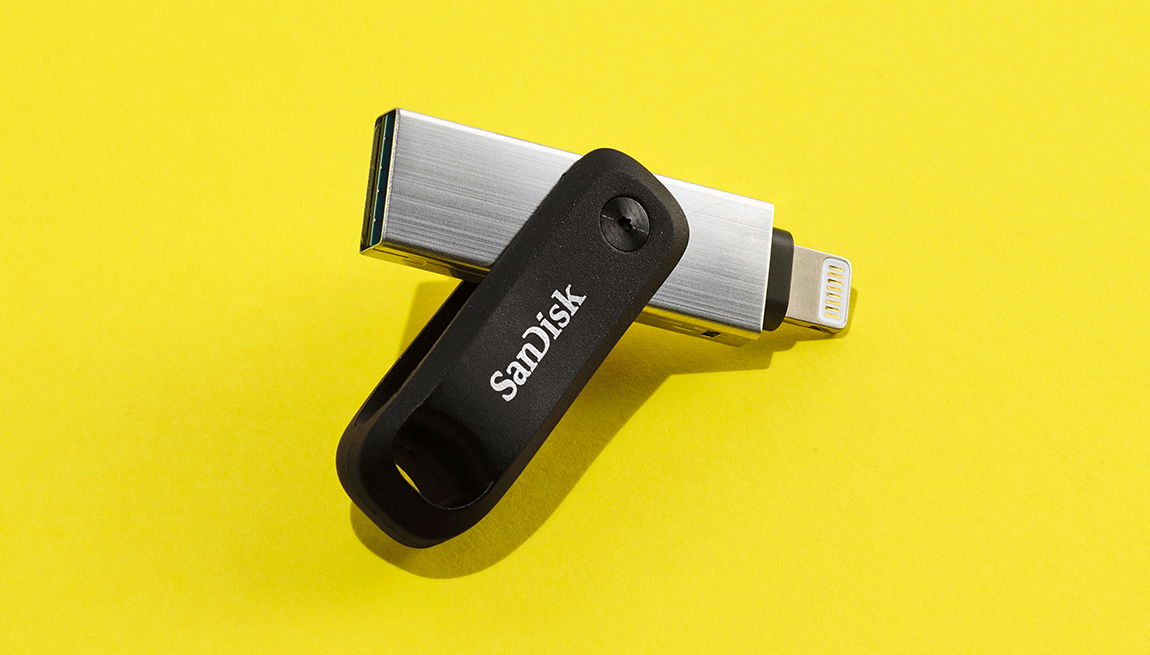
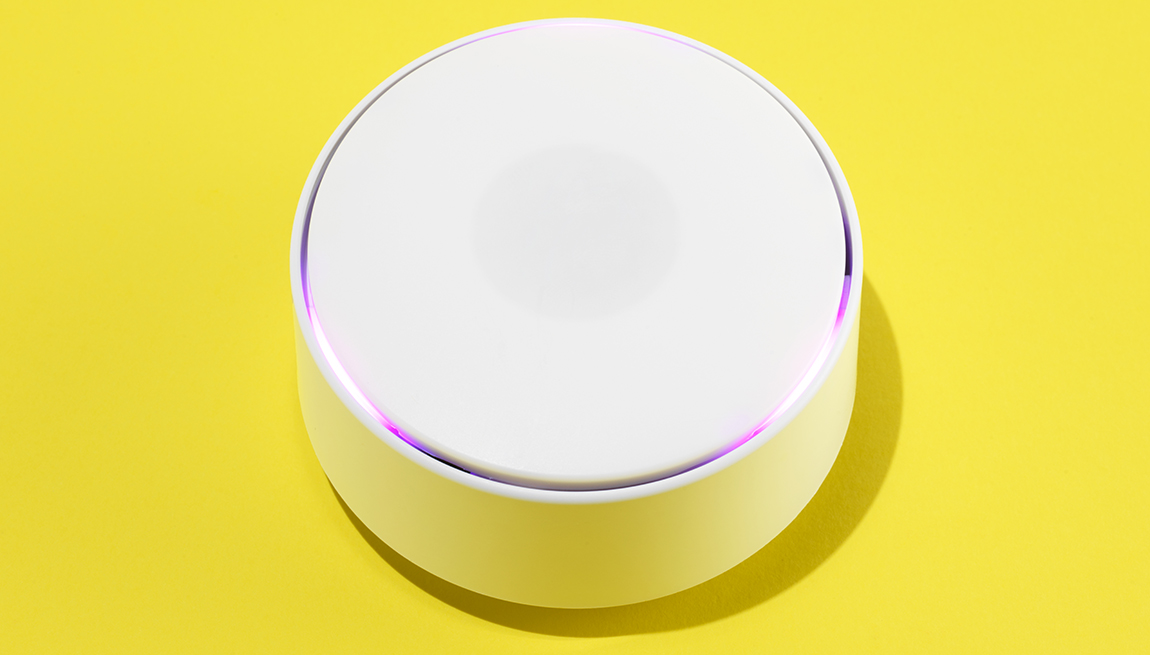
![item 6 of Gallery image closeup of the side of an eyeglasses frame is shown with a small location device attached to the side ]](https://cdn.aarp.net/content/dam/aarp/home-and-family/your-home/2019/12/1140-life-made-easier-orbit-eyeglass.jpg)
